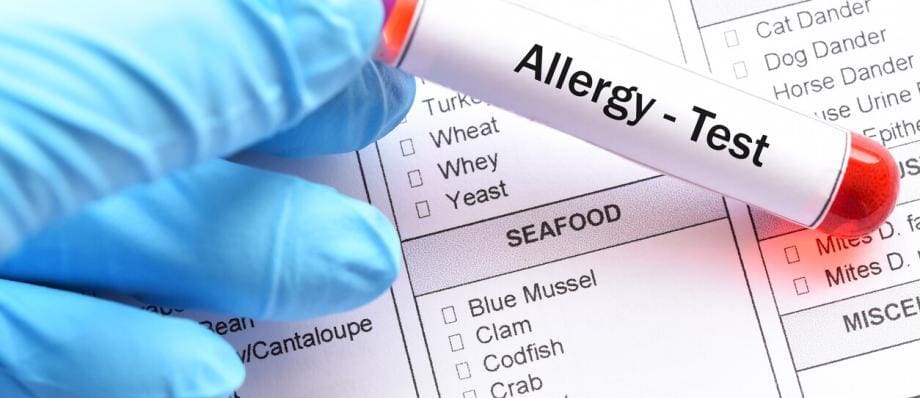Dental allergies, although relatively uncommon, can have a significant impact on oral health and overall well-being. Allergies to dental materials and substances used during dental procedures can lead to various adverse reactions, ranging from mild irritations to severe allergic responses. It is essential for both dental professionals and patients to be aware of these allergies, their causes, symptoms, and available treatment options. In this article, we will delve into the world of dental allergies and provide a comprehensive understanding of this important aspect of oral healthcare.
Causes of Dental Allergies
Dental allergies can be triggered by various factors, including:
- Dental Materials
- Latex
- Medications
Dental Materials
Certain dental materials can cause allergic reactions in susceptible individuals. Examples include metals like nickel, cobalt, and chromium used in dental restorations, as well as acrylic and composite resins used in fillings and prosthetic appliances.
Latex
Latex is commonly found in dental gloves and can cause allergic reactions in individuals with latex allergies. Dental professionals need to take precautions and use non-latex alternatives to protect patients with known latex allergies.
Medications
Local anesthetics, antibiotics, and other medications used in dental procedures can cause allergic reactions in some individuals. It is crucial for patients to inform their dentist about any known drug allergies to ensure appropriate alternative medications are used.
Symptoms of Dental Allergies
The symptoms of dental allergies can vary depending on the individual and the specific allergen involved. Common symptoms include:
- Oral Symptoms
- Skin Reactions
- Respiratory Symptoms
- Systemic Reactions
Oral Symptoms
Patients may experience oral discomfort, including burning or itching sensations, swollen or red gums, and mucosal ulcers.
Skin Reactions
Skin reactions such as rashes, hives, or swelling around the mouth, face, or neck may occur.
Respiratory Symptoms
Allergies can also manifest as respiratory symptoms, including sneezing, coughing, wheezing, nasal congestion, or shortness of breath.
Systemic Reactions
In rare cases, dental allergies can lead to more severe systemic reactions, such as anaphylaxis, characterized by swelling, difficulty breathing, low blood pressure, and potential life-threatening complications.
Diagnosis of Dental Allergies
Proper diagnosis of dental allergies is crucial for effective management. The following methods are commonly used:
- Medical History
- Patch Testing
- Blood Tests
Medical History
Dentists should obtain a detailed medical history from the patient, including any known allergies or previous allergic reactions. This information helps identify potential allergens and guide appropriate treatment.
Patch Testing
Patch testing involves applying small amounts of potential allergens to the patient’s skin to identify allergic reactions. This method is particularly useful for diagnosing allergies to dental materials.
Blood Tests
Blood tests, such as specific IgE (immunoglobulin E) tests, can be performed to detect allergies to specific substances. These tests measure the presence of allergen-specific antibodies in the blood.
Treatment Options for Dental Allergies
The management of dental allergies primarily involves avoiding the allergen and alleviating symptoms. Treatment options include:
- Avoidance of Allergens
- Medications
- Desensitization
- Emergency Preparedness
Avoidance of Allergens
Once the allergen is identified, avoiding its use is the most effective way to prevent allergic reactions. Dentists must select alternative dental materials and techniques for patients with known allergies.
Medications
Over-the-counter antihistamines can help relieve mild symptoms of dental allergies. For severe reactions, prescription medications like corticosteroids may be necessary.
Desensitization
In certain cases, desensitization therapy, also known as immunotherapy, may be recommended. This approach involves gradually exposing the patient to small amounts of the allergen, allowing the immune system to develop tolerance over time. Desensitization therapy is usually carried out under the supervision of an allergist or immunologist.
Emergency Preparedness
Individuals with known severe allergies should always carry an epinephrine auto-injector (e.g., EpiPen®) in case of an anaphylactic reaction. Prompt administration of epinephrine can help reverse the symptoms and provide time for emergency medical assistance to be sought.
Prevention and Precautions
Preventing dental allergies requires a proactive approach. Here are some preventive measures and precautions to consider:
- Allergy Screening
- Material Selection
- Patient Communication
- Latex-Free Environment
- Collaboration with Allergists
Allergy Screening
Dentists should routinely screen patients for allergies, especially when selecting materials for restorations or prosthetic appliances. Asking about known allergies and conducting appropriate tests can help identify potential allergens.
Material Selection
When choosing dental materials, dentists should consider the potential allergenicity of each substance. Opting for hypoallergenic materials or alternative options can reduce the risk of allergic reactions.
Patient Communication
Patients should inform their dentist about any known allergies or previous allergic reactions. Open communication between the patient and dental professional allows for appropriate precautions to be taken and alternative materials to be used.
Latex-Free Environment
Dental professionals should create a latex-free environment to protect patients with latex allergies. Non-latex gloves, dental dams, and other latex-free alternatives should be readily available.
Collaboration with Allergists
Dentists should establish a collaborative relationship with allergists or immunologists to ensure proper diagnosis, management, and treatment of dental allergies. Referring patients with complex allergies or severe reactions to specialists can optimize patient care.
Conclusion
Dental allergies can pose significant challenges in oral healthcare, affecting both patients and dental professionals. Understanding the causes, symptoms, and treatment options for dental allergies is vital for timely diagnosis, appropriate management, and prevention of adverse reactions. By employing effective preventive measures, conducting thorough allergy screenings, and maintaining open communication, dental professionals can minimize the risk of allergic responses and provide optimal care to patients. Furthermore, patients must be proactive in communicating their allergies and seeking dental care from practitioners who are knowledgeable about dental allergies. By working together, patients and dental professionals can ensure a safe and comfortable dental experience for everyone.
Remember, if you suspect a dental allergy or experience any symptoms after dental treatment, consult with a healthcare professional, such as a dentist or allergist, for a proper diagnosis and guidance on managing your specific condition.





